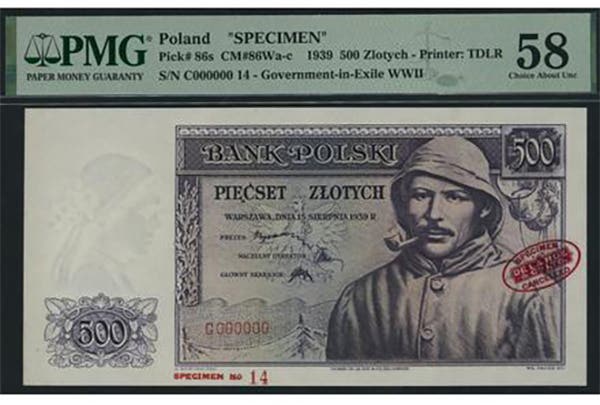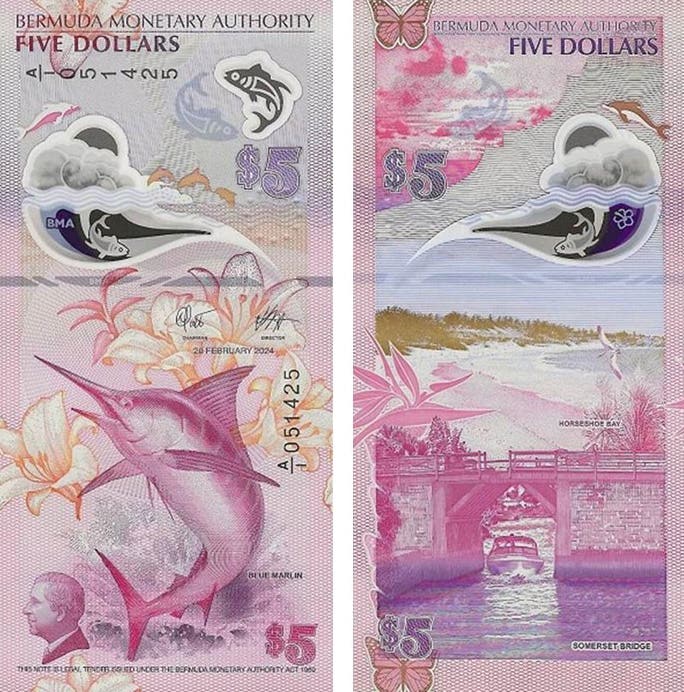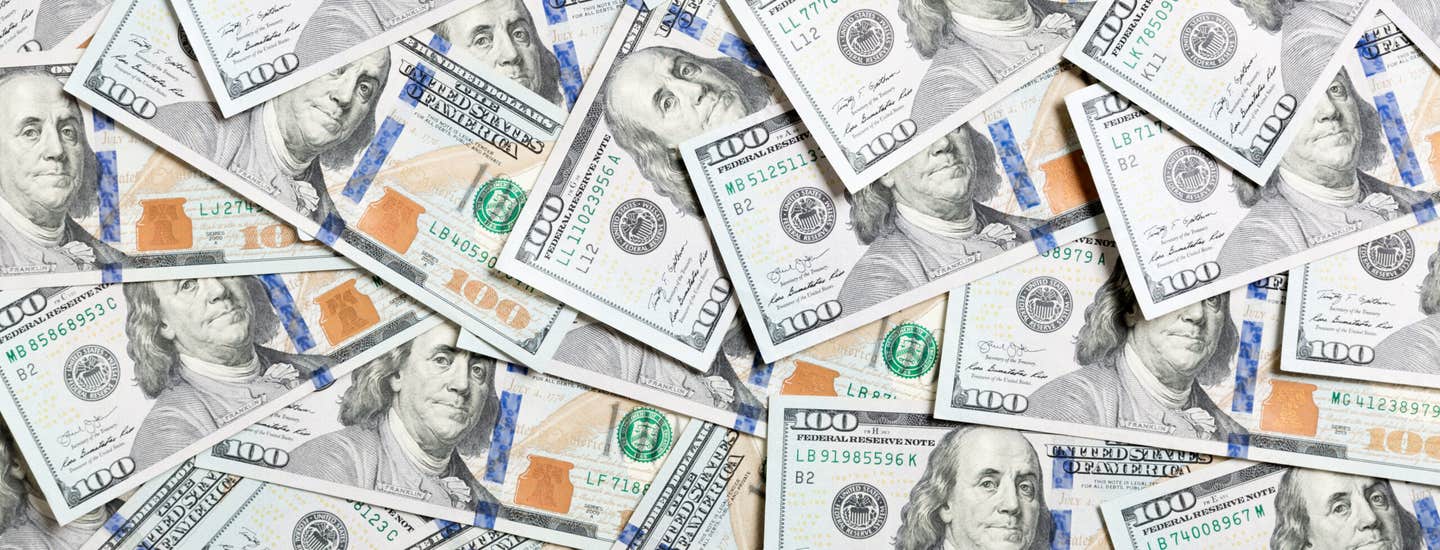The Rate of Discovery of National Bank Notes
By Peter Huntoon Lee Lofthus’ important article “Are there more nationals to find?” in the December 2012 Bank Note Reporter ignited interest in what remains in the weeds. His calculations…
By Peter Huntoon
Lee Lofthus’ important article “Are there more nationals to find?” in the December 2012 Bank Note Reporter ignited interest in what remains in the weeds. His calculations indicated that depending on how you cook the numbers, between 10 and 25 percent of the outstanding nationals based on Treasury estimates had been reported in the National Currency Foundation census by 2012. He was basing that estimate on the fact that 245,919 notes had been recorded in the census as of August 2012. The obvious implication is that there are hundreds of thousands more out in the weeds waiting to come in.
As of July 2018, the National Currency Foundation census stood at 410,000 notes, up 164,000 from August 2012. This is a significant increase of 40 percent. But the fact is that the caretakers of the NCF census have been overwhelmed and have been unable to cope with recording the huge volume of previously unreported material crowding into the market, particularly the major auctions. Furthermore, many of the networks of state providers of data on new finds have fallen apart, so the 164,000 new additions represent a serious undercount of the actual unreported notes that otherwise have appeared since 2012.
Even so, the incredible current sample of 410,000 reveals the landscape of what is known. The fact is that the vast majority of missed reports consist of common material that few people pay much attention to as it goes by. In contrast, the rare material tends to win appreciably more notice, so is preferentially logged in.
I’ve been recording Alaska, Arizona, New Mexico, Wyoming, and large-size territorial nationals since the late 1960s. I began archiving this data at the end of each year beginning in 1989, thus creating a snapshot of how those censuses have grown yearly since then.
I first published these findings in the January 2014 BNR in an article entitled, “Is eBay a source for virgin nationals?” My data revealed two things: First, as of 2013, the rate at which newly discovered notes were being recorded hadn’t varied between 1989 and 2013. Second, the advent of eBay had no effect on the rate at which newly-found nationals came onto our market.
Another four years have passed, and the newer data still reveal that the rate of discovery hasn’t changed at all. Both points are worth developing.
The rates that my censuses are growing average 1.2 Alaska, 12 Arizona, 23.5 New Mexico, 24.5 Wyoming and 14 large size territorials notes per year. The population of banks contributing these numbers are three for Alaska, 27 for Arizona, 63 for New Mexico, 61 for Wyoming, and 605 large size territorial issuers.
You will see that the data for the respective censuses plot as virtually straight lines over the 28 years of record on the graph that accompanies this article. If there had been a systematic change in rates – that is, something causing more or fewer notes to appear each year – the lines would bend respectively up or down.
In July of this year, I attended the Higgins Museum seminar in Okoboji, Iowa, where Steve Sweeney gave a presentation entitled, “The Iowa census, evolving and maturing.” He and James Ehrhardt have been doggedly maintaining the Iowa national bank note census for years and presented their findings in “Iowa National Bank Notes,” a 236-page book and subsequent 45-page supplement that were published by the Higgins Foundation in 2006 and 2016, respectively.
Theirs is one of the finest state censuses in existence because they have had fantastic cooperation from the Iowa collectors who not only share their own data but record notes that they see.
There were 496 issuing banks in Iowa. Steve pointed out that the Iowa census built by John Hickman stood at just under 6,000 notes in 1995. Sweeney was able to advise his network of contributors that the total had broken the 10,000 mark in July 2004. The cutoff date for their book was June 30, 2006, and by that date the total had grown to 11,058. The cutoff date for their supplement was March 21, 2016, with a total then of 13,503. As of July 30, 2018, the number was 14,014.
Their experience is identical to mine; specifically, their census has grown linearly at an average rate of 250 notes per year since they have been working on it.
Send Sweeney data from Iowa finds at xcp2@msn.com.
Another stellar state census is one maintained by William Herzog for Michigan, again aided by a cadre of dedicated Michigan collector/contributors. They are dealing with the issuances from 278 banks. Building on the original Hickman/Kelly census, which stood at 9,861 on January 23, 2007, Herzog has now recorded 13,263 notes. He has been adding an average of 322 notes per year from 2003 to 2017, but he cautions that the rate has declined during the past three years. Bill’s annual totals exhibit larger swings than mine. Some of the spikes represent recordings from long-held unvetted collections that came onto the market in those years.
Bill’s annual yield of new reports is significantly larger than that of Ehrhardt and Sweeney’s because the percentage of big-city banks in Michigan is far greater than in Iowa, even though there were 44% fewer banks there.
Send Herzog Michigan finds at wmherz@aol.com.
The lack of an eBay effect was a surprise. It seemed intuitive that opening up that avenue to the unwashed would cause a flood of new material to come onto our market. It just didn’t happen.
eBay was founded on Labor Day in 1995. If eBay was bringing more new material to our market, the lines on my graph should have started to bend upward after 1995 and continued onward with a steeper trajectory. They don’t.
No one will deny that eBay plays an important role in our marketplace. My data simply reveal that it hasn’t created a significant influx of virgin material from the weeds.
What I can say is that the existing numismatic market draws virgin nationals to it simply by virtue of being the market for such material. Once released from the weeds – however that occurs – the material heads our way regardless of the path it takes, and we get to see it. That is the classic operation of any market, and our market is alive, well, and well known.
eBay has caused a tectonic reorganization of the numismatic market in that all sorts of sellers flock to eBay to market their wares because they are assured of reaching a wide audience and most likely will realize a fair price. Furthermore, owing to the excellent exposure that eBay provides, uninformed sellers do not find themselves at a disadvantage for lack of knowledge about what they are offering, because their material will find its level in that competitive space.
eBay saves casual sellers the hassle of having to research what they are selling beyond finding the right niche in which to list it. Thus, eBay gives people the opportunity to cut out the middlemen in the form of the hometown coin dealers and vest pocket dealers. The result is that such middlemen have become an endangered species.
The reality is that eBay has caused a reorganization of how material is marketed, but it hasn’t altered the net supply or caused virgin material to come onto market at a faster rate. The fact is, the material that used to reside in coin shops or appear on bourse floors is the same material that is now available on eBay.
A similar reorganization of our market occurred with the entry of auction firms offering currency beginning in the mid-1970s. In contrast, the numismatic marketplace I knew in the 1960s consisted of a plethora of independent sellers of every imaginable stripe. That model has been almost totally supplanted by auction firms such as Heritage, Knight, Stack’s-Bowers, eBay, and smaller firms. The vest pocket dealers of yore have morphed into runners for the major auction houses.
The corporate types figured it out and have insinuated themselves into our game so they can skim a percentage of the flow. This transformation has been as radical as the demise of mom and pop cafes and emergence of the McDonald’s. Like it or not, the corporate types created a more efficient marketplace. Theirs is the utilities model. The idea is to put a meter on the flow and get rich by taking a percentage of it, regardless of whether the source provider or end user profits or loses.
If you track your favorite notes, you will see a fluid flow of them as they slosh back and forth between collectors, brick and mortar dealers, vest pocket dealers, and the auction firms. Many notes are now getting rotated through eBay and the auction firms or vice versa as the same seller tests the effectiveness of either option to maximize his yield.
My finger on the pulse of things leads me to conclude that the velocity of the transactions – how frequently the same item sells – seems to be increasing. The lifetime of benchmark collections seems to be shortening, so the turnover of significant collections is more frequent.
The bottom line, though, is that people who have numismatic material for sale bring it to our market because ours is the market. They simply use whatever form of the marketplace appeals to them at the moment, but it is the same material no matter where it shows up. This holds for previously reported material as well as new discoveries from the weeds.
The mix of new material that I record is about the same as in the past. Roughly the same percentage consists of stellar material: previously unreported banks, number 1 notes, notes with incredible grade, etc.
The bulk of the new material is, of course, material that already is considered very common in our marketplace.
One fact that you can bank on is that there is no shortage of incredible finds yet lurking in the weeds. We haven’t seen the spigot turn down. The real risk is that today’s rarities will become tomorrow’s scarcities. Today’s scarcities may well turn into tomorrow’s fairly available notes.
At issue is the following conundrum. Are the notes scarcer than the collectors, or are the collectors scarcer than the notes? National bank notes are notoriously fickle to handle and own. The primary goal of our community should be to grow itself so that collectively we can keep soaking up the new material that is coming our way, because it is coming!
Cautions are in order about the data I am presenting here. My plots are linear. The implication is that the rate of discovery of new material has been constant over the last 28 years.
There are other serious mathematically gifted thinkers in our game who have worked this issue, most notably Don Kelly and Bob Liddell. Both have developed good mathematical models to predict the future behavior of our censuses.
Both have devised what are called exponential decay algorithms that assume that the yield from some finite supply must decrease as the size of that finite supply diminishes. In nuclear physics, this type of decay model yields the half-life rule that describes the decay of radioactive elements into stable elements. I believe in this type of behavior as did John Hickman, who was the father of the nationwide national bank note census.
However, if this type of mathematics operated in my censuses, the lines on the graphs should begin to bend downward and eventually become flat. Surprising to me and to my other census-taking colleagues, they don’t. At least not yet.
The reality is that everyone – Hickman, Kelly, Liddell, and yours truly – seriously underestimated the number of nationals that would eventually come into our market. The discoveries left all of our predictions in the dust years to decades ago!
When I wrote my book on Territorials in 1985, the census of large-size territorials stood at about 600 notes. I boldly estimated that ultimately there would be 900 of them. We tore past that number in 2000, and now we know of 1,144, and the conveyor belt is still delivering. So much for a brilliant forecast!
Eventually, some decay function has to take over. We just haven’t detected its effect yet.
I track rare material, and this gives me a significant leg up over the census takers for the larger states. The generally higher prices for the material I track give that material higher visibility. Specifically, it is more likely to appear in auctions and ads, so I get to see it. Of course, a percentage of it goes under my radar. The result is that even my censuses are undercounts. This doesn’t particularly eat away at me because, as collections turn over, the items I missed will reveal themselves. The takeaway, though, is that even the best censuses are undercounts.
I have been at a disadvantage during the past decade in that I am no longer collecting, so I am not foraging bourse floors. My data reveals that I’m not missing much, mostly thanks to the good works of friends and dealers who feed eBay, auction, and in-stock hits of interest to me.
I used to have an excellent network of fellow collectors of the material I track, and that network kept me current on material that they saw or obtained that I might have otherwise missed. However, those networks have largely withered in every area I track because my collaborators have sold their collections, so they no longer are feeding data to me.
If you are collecting in any of the areas I track, let me know so I can network with you. It is a mutual back-scratch that will keep both of us energized. You can reach me via email at peterhuntoon@outlook.com.
This article was originally printed in Bank Note Reporter. >> Subscribe today.
If you like what you've read here, we invite you to visit our online bookstore to learn more about Standard Catalog of United States Paper Money.
NumismaticNews.net is a participant in the Amazon Services LLC Associates Program, an affiliate advertising program designed to provide a means for sites to earn advertising fees by advertising and linking to Amazon.com and affiliated websites.








